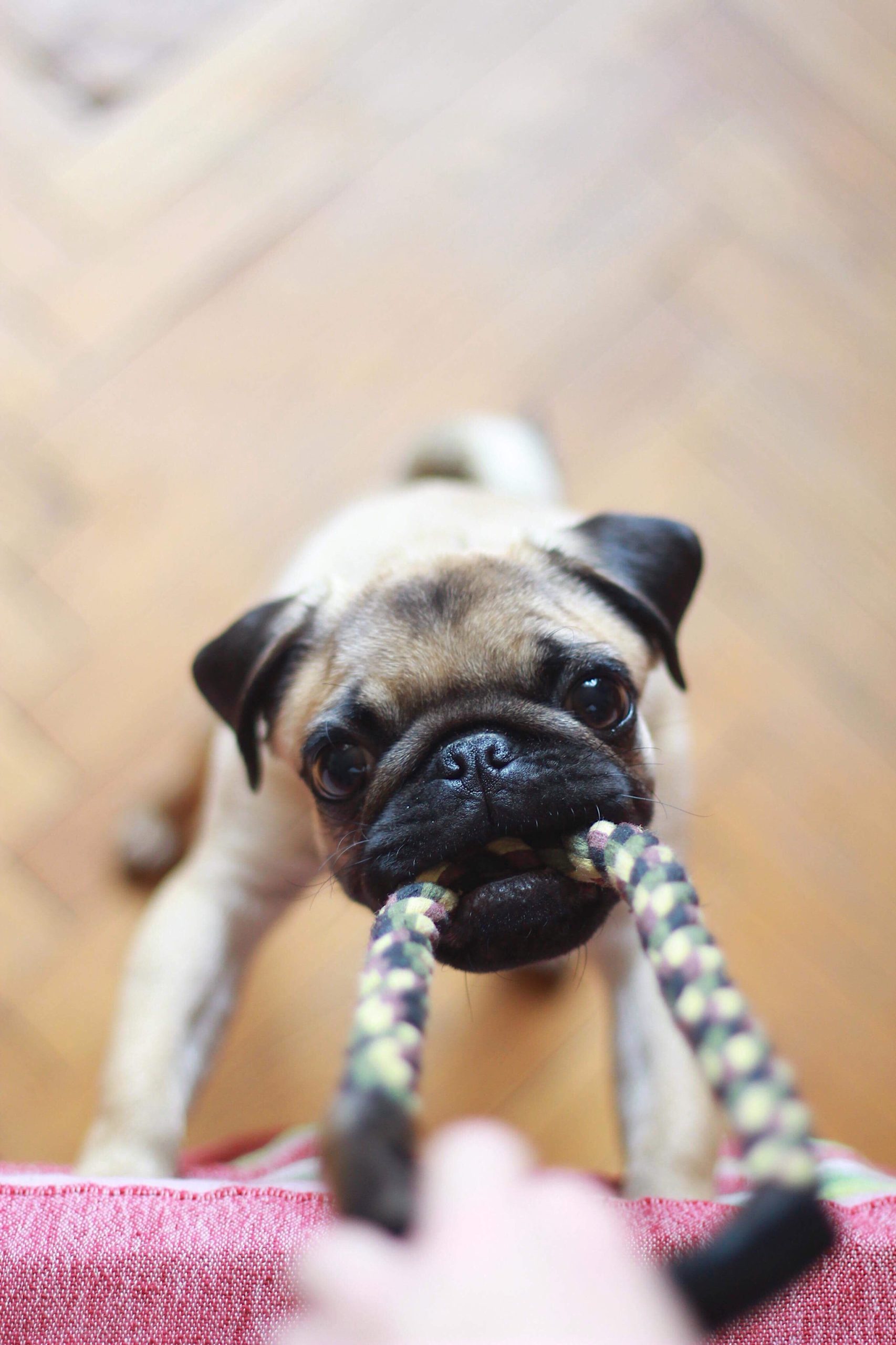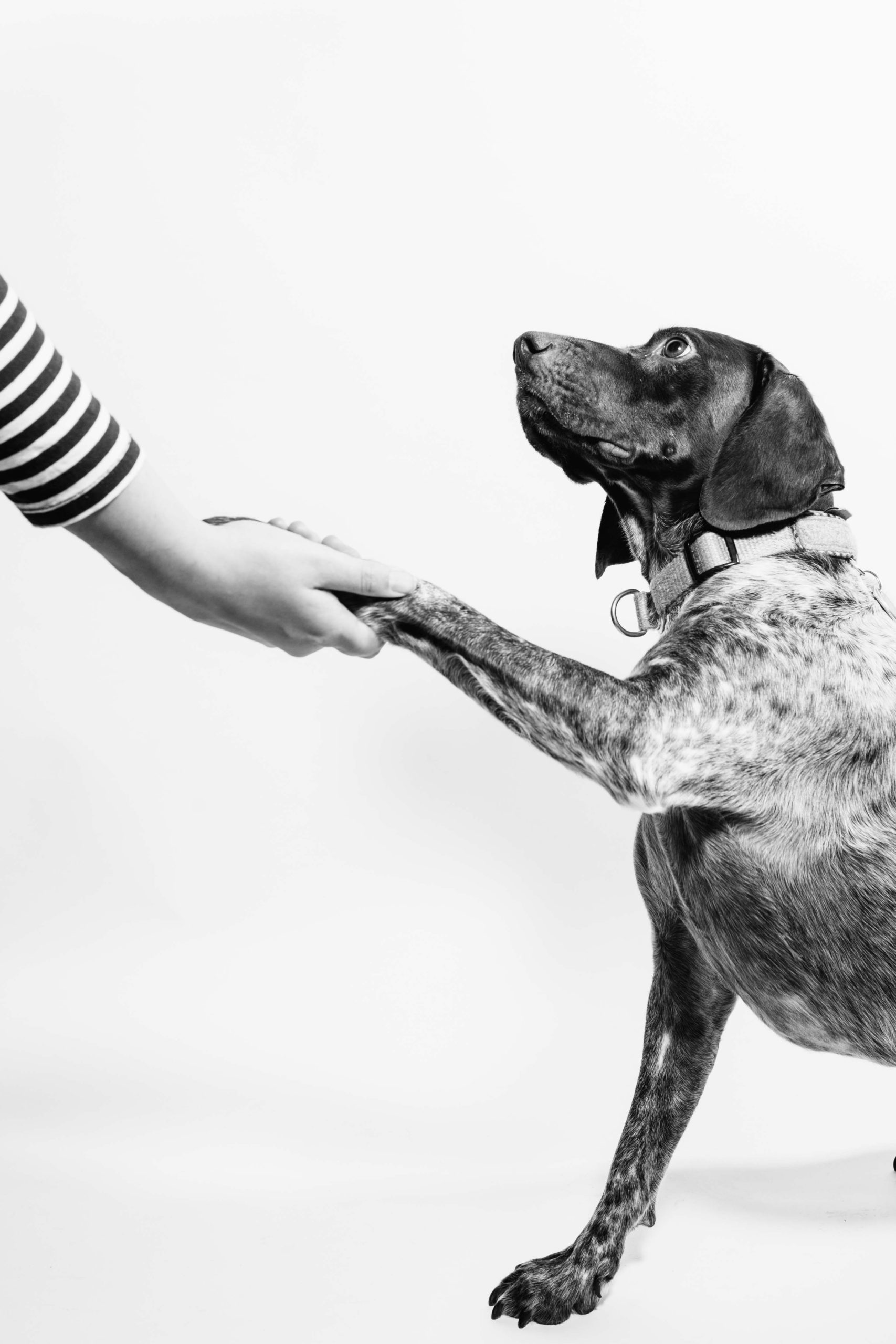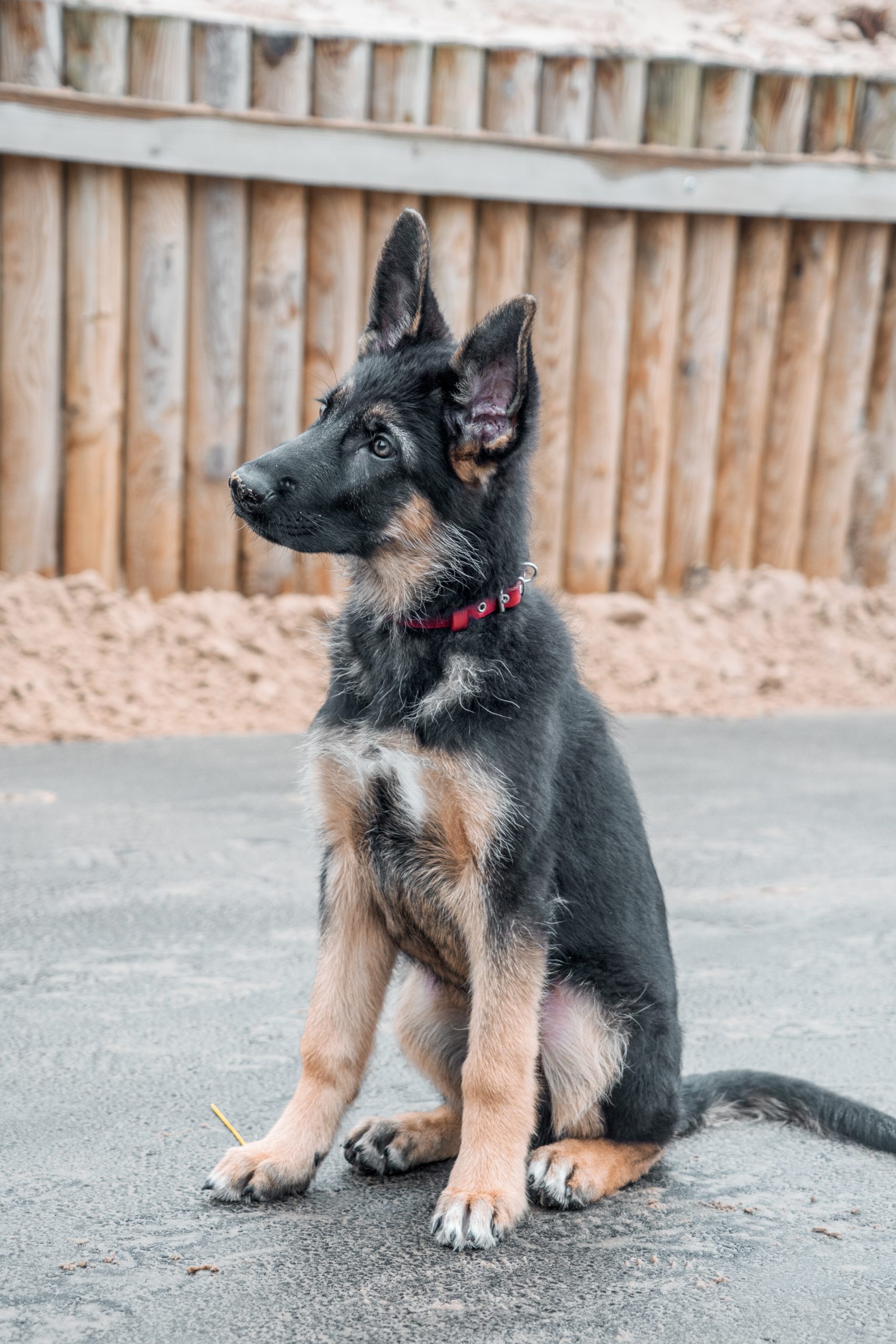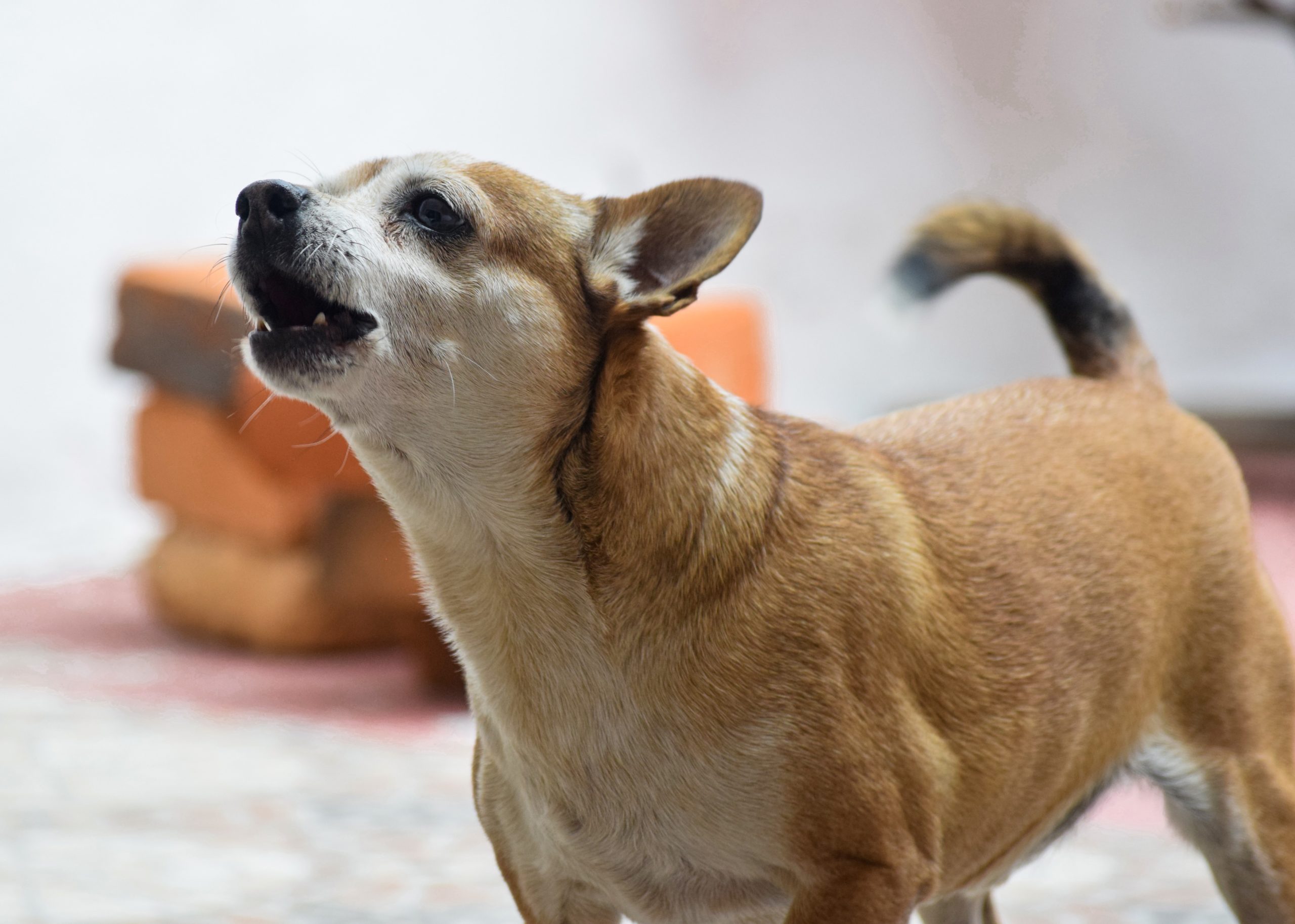Welcoming a new puppy into your home is an exciting time, but it also comes with the important responsibility of properly training your furry friend. Establishing good habits early on not only creates a positive environment for both you and your pup, but also lays the foundation for a lifelong bond between you two.
In this comprehensive guide, we’ll explore essential puppy training tips and techniques to ensure that you’re well-equipped to handle everything from housebreaking and crate training to basic obedience commands like sit and stay.
Basic Puppy Training Techniques
Housebreaking is an essential basic training technique that involves teaching your puppy to relieve themselves in designated areas.
Housebreaking
Housebreaking is an essential part of puppy training, as it teaches your furry friend to eliminate waste outdoors or in a designated area. By implementing the right techniques early on, you’ll be able to prevent unnecessary messes and help foster good habits.
Consistency is key for successful housebreaking; always take your dog outside through the same door and praise them when they finish their “business.” This helps reinforce that this behavior is expected.
Should accidents occur indoors (which are bound to happen during training!), clean up immediately using an enzyme-based cleaner to fully remove odors that could otherwise entice canines back to the spot.
Crate Training
Crate training is an important aspect of puppy training, and it involves using a crate or cage to train the puppy to stay in one area for extended periods. Pet owners can use crates to transport their puppies safely as well.
To start crate training, introduce the puppy to its new home gradually. Place some treats inside the crate, so your dog gets familiar with it.
Puppy owners should avoid crating their pets for long periods since this might lead to anxiety problems and other behavioral disorders. When used correctly, a crate can be a safe and comfortable place for a pet that provides security when left alone or during travel.
Positive Reinforcement
Positive reinforcement is a training technique that involves rewarding your puppy for good behavior. This method relies on praise, treats, or toys to encourage desirable actions and discourage undesirable ones.
For example, if you’re teaching your puppy to sit, you can offer them a treat every time they successfully do so. The more times they sit correctly and receive a reward, the more likely they’ll remember this command and execute it without needing treats later on.
Positive reinforcement helps build trust between pet owners and their puppies while making the training process enjoyable for both parties.
Socialization
Socialization is a crucial aspect of puppy training that can help them grow into confident and well-adjusted adult dogs. Puppies need to learn how to interact with other dogs, people, and animals in a safe and controlled environment.
Taking your puppy on walks or visits to the park can be great ways to socialize them. Encourage positive interactions by rewarding good behavior with treats or praise.
A great way for puppies to socialize is through attending training classes designed specifically for their age group. Puppy classes are typically focused on basic obedience commands like sit, stay and come but also include aspects of socializing in groups with other pups as well as meeting various types of people under the guidance of professional trainers who will teach responsible dog ownership while ensuring positive reinforcement techniques are used throughout training sessions.
Essential Commands To Teach Your Puppy
Teaching your puppy basic commands is crucial for their obedience and safety. From “sit” to “heel,” discover the most important dog training commands that make life with your pup much easier. If you feel that you still struggle to get results you can always seek professional help to get there faster.
Sit
Teaching your puppy to sit is an essential command in their training. It can help control impulsive behavior and build a trusting relationship with your furry friend. Here are some tips on how to teach your puppy to sit:
- Start with small training sessions that last no longer than 5 – 10 minutes.
- Use treats or toys as rewards for following the command correctly.
- Stand in front of your puppy, holding a treat just above their nose but out of reach.
- Move the treat slowly back over their head while saying “sit.”
- As the puppy follows the treat with their nose, their bottom should naturally lower into a seated position.
- Once they sit, immediately praise them and give them the treat or toy as a reward.
- Repeat these steps daily until your pup has mastered the sit command.
Remember, consistency and patience are key when training your puppy. Practice this command often in different environments to reinforce their understanding of it. With positive reinforcement and plenty of practice, your furry friend will be sitting on command before you know it!
Stay
To build a strong bond with your puppy, it’s important to teach them the “stay” command. Here are some steps to follow:
- Start in a quiet area with few distractions.
- Tell your puppy to sit, and once they’re seated, give the command “stay” in a firm but friendly voice.
- Hold out your hand with your palm facing towards your puppy for extra emphasis.
- Step back slightly and wait for a few seconds before returning to your puppy’s side and rewarding them with a treat or praise.
- Gradually increase the amount of time you ask them to stay and the distance you move away from them.
Remember to practice frequently in different environments and gradually increase the level of difficulty. Consistency is key – don’t forget to reward good behavior every time and avoid punishment as it can damage the relationship between you and your furry friend.
Come
Teaching your puppy the “come” command is essential for their safety and your peace of mind. Here are some tips to help you train them correctly:
- Start training in a quiet and controlled environment, preferably indoors.
- Use a positive and enthusiastic tone when calling your puppy’s name followed by the “come” command.
- Use treats and praise to reward them every time they obey the command and come to you.
- Gradually increase the distance between you and your puppy before giving the “come” command.
- Practice in different locations and environments once your puppy has mastered the command indoors.
- Never punish or scold your puppy if they do not come immediately; this will only make them fear the command.
- Use a long leash (10 – 15 feet) for outdoor training until your puppy has mastered the “come” command.
By following these tips, you can teach your puppy how to come on command successfully while building a positive relationship with them based on trust and respect.
Heel
Teaching your puppy to heel is an essential part of obedience training. It involves teaching your dog to walk calmly and closely beside you without pulling or lunging on the leash. Here are some tips for teaching your puppy to heel:
- Start indoors: Begin by walking around the house with your puppy on a leash, rewarding them with treats and praise for sticking close to you.
- Use positive reinforcement: Reward good behavior with treats, toys, or verbal praise. This reinforces that being close to you is a positive experience for your puppy.
- Practice in different environments: Once your puppy has mastered heeling indoors, gradually move outside to practice in different environments such as parks and sidewalks.
- Be consistent: Consistency is key when training dogs, so make sure everyone in the household follows the same rules for heeling.
- Use a short leash: A shorter leash gives you more control over your puppy’s movements and helps keep them focused on you.
- Keep walks short: Puppies have limited attention spans, so keep training sessions short and end them on a positive note.
- Handle distractions appropriately: When practicing heeling in public places, anticipate distractions such as other dogs or people and handle them calmly and positively.
By following these tips and being patient and consistent, you can help your puppy learn proper heeling behavior that will make walks more enjoyable for both of you!
Addressing Common Puppy Behavioral Issues
Puppy owners often encounter common behavioral issues such as chewing and biting, excessive barking, jumping on people, and separation anxiety which can be addressed through appropriate training techniques and behavior modification.
Chewing And Biting
Puppies have a natural instinct to chew and bite, but it can become problematic for pet owners when they start damaging furniture or nipping at people. To help curb this behavior, there are several things that pet owners can do.
First, make sure your puppy has access to plenty of chew toys to redirect their desire to gnaw on something.
It’s also important to teach your puppy that biting is not acceptable behavior. Consistency is key here – every time your puppy bites, give a firm “no” and remove yourself from the situation if possible.
Excessive Barking
Excessive barking is one of the most common behavioral issues in puppies. It can be caused by a variety of reasons such as boredom, anxiety, fear, or even excitement. Pet owners should take steps to address excessive barking early on before it becomes a persistent problem.
One effective way is through positive reinforcement training techniques that reward good behavior and ignore bad behavior.
Another approach is to identify the cause of excessive barking and address it accordingly. For example, if your puppy is bored, providing more exercise and playtime opportunities could help reduce its need for attention-seeking behaviors like excessive barking.
Above all, consistency is key in addressing any behavioral issues in puppies.
Jumping On People
Jumping up on people can be a common problem with puppies, but it is essential to address this behavior early on. It can be cute when they are small, but as they grow bigger, it becomes less endearing and can even become dangerous.
A good way to stop your puppy from jumping up is by teaching them an alternative behavior that you would prefer.
It’s important to remain consistent with training so your dog learns what behavior is expected of them in different situations. When greeting people at the door or out in public places, have your puppy practice their alternate behavior while rewarding and praising them for doing so correctly.
With time and persistence, you will see positive changes in your pup’s behavior towards guests or strangers out in public areas.
Separation Anxiety
Puppies are social creatures, and they require constant love and attention. However, sometimes dog owners need to leave their puppies at home while they go out for work or other engagements.
This could trigger a common behavioral issue called separation anxiety in puppies. Separation anxiety occurs when dogs fear being left alone and can lead to destructive behavior such as tearing up furniture, barking excessively, or even destroying the house.
One way to discourage separation anxiety is through positive reinforcement techniques during training sessions.
Another technique that has proven effective is engaging your puppy in mentally stimulating activities before you leave the house such as puzzle games or providing toys filled with food which encourages mental stimulation – this tends to keep him/her occupied until you return home while also promoting cognitive development over time.
Maintaining A Positive Relationship With Your Puppy
Pet owners can maintain a positive relationship with their puppy by engaging in consistent training, bonding activities, providing a healthy diet and hygiene routine, ensuring regular veterinary checkups, and making time for exercise and playtime.
Exercise And Playtime
Regular exercise and playtime are crucial for the overall health and well-being of your puppy. Exercise helps puppies to stay fit, active, and mentally stimulated.
It also aids in socialization by providing an opportunity for them to interact with people, other dogs, and their surroundings.
As a pet owner, you should engage in daily exercise routines such as walking or running with your puppy or playing fetch outdoors. You can also incorporate games that stimulate mental agility such as hide-and-seek or puzzle toys that encourage exploration and problem-solving skills.
It’s important to remember that each dog has individual needs when it comes to exercise requirements.
Overall, incorporating regular exercise and playtime into your pet’s routine goes beyond just physical benefits but provides opportunities for bonding moments between you both while ensuring they remain healthy both physically and mentally.
Consistent Training
Consistent training is one of the most critical aspects of puppy training. Puppies thrive on routine, and consistent training helps them understand what is expected of them.
It also helps establish a strong bond between the pet owner and their furry companion. Consistency means that you should train your puppy in the same way every time, using the same commands and rewards.
You should also set aside time for regular training sessions each day, keeping in mind that puppies have short attention spans.
According to experts, consistency is key when it comes to dog training success. Once you start teaching your puppy new skills or commands, be sure to keep up with these lessons consistently over an extended period so they become imprinting habits.
Bonding Activities
Bonding with your new puppy is essential for creating a positive and lasting relationship. Here are some fun bonding activities that you and your furry friend can enjoy:
- Go for walks: Walking with your puppy is not only great exercise but also an excellent way to bond. It helps build trust, teach them good behavior on the leash, and allows them to explore new surroundings.
- Playtime: Playing together is a great way to create a strong bond with your dog. Try different games such as fetch, tug of war, or hide-and-seek. Playing games stimulates your pup’s mind and provides an opportunity for socialization.
- Treats and training: Positive reinforcement-based training is not only effective but also fun for both you and your puppy! Use treats to reward good behavior when training basic commands.
- Grooming sessions: Regular grooming can help keep your dog healthy and happy while also strengthening the bond between you two. Brushing their fur, trimming their nails and cleaning their ears will help foster trust and affection.
- Cuddle time: Puppies crave love and affection from their owners, so make sure you spend plenty of quality time cuddling with them every day.
Remember that each dog has its unique personality, likes, dislikes, wants, needs- make sure you tailor bonding activities based on what suits your furry companion best! By spending quality time together through these activities and consistent positive reinforcement-based training methods mentioned earlier in this blog post will help strengthen the bond between you two over time – resulting in a rewarding experience for both of you!
Healthy Diet And Hygiene
A healthy diet and good hygiene are essential aspects of taking care of your puppy. Feeding your pup a balanced and nutritious diet is crucial to their physical health, growth, and development.
Good hygiene habits can prevent diseases from spreading throughout your household. Regular grooming sessions such as brushing your puppy’s coat can minimize shedding while also building a stronger bond between you both.
Keep an eye out for any signs of infection or discomfort like redness or itchiness on their skin or unusual smells emanating from their mouth, ears, or anus area which could indicate an underlying health issue.
Regular Veterinary Checkups
Taking a puppy to the vet is necessary for a healthy and happy pet. Regular checkups help detect any potential health issues early before they become more severe problems.
Puppies require frequent visits to the veterinarian during their first year of life since they need vaccinations, parasite prevention, and exams to ensure they are growing properly.
Regular veterinary checkups not only keep your pet well but also provide you with important information about their overall well-being. Your vet can help address concerns about your dog’s behavior, nutrition, exercise routine, and dental hygiene during these appointments.
They can recommend specific diets catered to your dog’s needs based on its breed and age while monitoring its weight over time.
Conclusion
In conclusion, puppy training is an essential part of raising a happy and healthy pet. By following basic techniques such as housebreaking, crate training, positive reinforcement, and socialization, pet owners can teach their puppies how to behave properly.
Essential commands like sit, stay, come and heel are crucial for obedience training. Addressing common behavioral issues in puppies like chewing & biting or excessive barking requires patience and consistency with behavior modification techniques.
It’s important to maintain a positive relationship with your puppy through exercise & playtime, and bonding activities while ensuring good hygiene practices with a balanced diet and regular veterinary checkups achieve optimal health benefits.
Remember that starting early gives you more time to build trust between you and your furry friend, making learning fun for both parties involved.
FAQs:
1. When should I start training my puppy?
Training should begin as early as possible, ideally between 8-12 weeks of age when puppies are most receptive to learning new behaviors and habits.
2. What are some important obedience commands to teach my puppy?
Some key obedience commands include sit, stay, come, heel, and leave it. These basic commands can help establish boundaries and reinforce good behavior in your dog.
3. How can I effectively potty train my puppy?
Potty training requires consistency and patience from the owner. Puppies should be taken outside frequently and praised heavily when they go potty outside. Crate training is also helpful in preventing accidents indoors.
4. How do I prevent bad habits from forming during training?
It’s important to establish consistent routines with your puppy that discourage undesirable behaviors such as biting or jumping up on people. Reward good behavior with treats or positive reinforcement techniques like praise or playtime to encourage the repetition of desirable actions while ignoring negative reactions that only reinforce unwanted behavior patterns over time instead!



